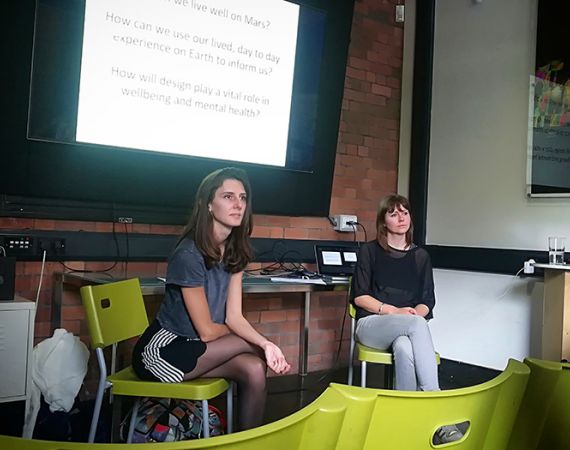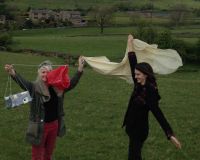Lunchtime talk write-up
Posted on Mon 2 Jul 2018
Building a Martian House
Ella Good and Nicki Kent collaborate together to create work all about the future. They are currently in the midst of a ten-year project called A Decade of Mars.

Posted by
Speaker

Nicki Kent
Nicki Kent works with artist Ella Good to create socially engaged projects. They are currently making a ten year series of works called A Decade With Mars.Ella Good and Nicki Kent collaborate together to create work all about the future. They are currently in the midst of a ten-year project called A Decade of Mars. Previously, they have brought communities groups together in parks across the UK to launch a series of weather balloons with cameras attached to film the edges of space. They have also brought people together to recreate a tradition of Kazakhstan where astronauts plant trees before setting out on their space mission.
Five Things I Learned:
1. Ella and Nicki are now in year 4 of the ten-year project and they are currently working on Building a Martian House. Although their work is about space, it is devised to simulate discussions about Earth. It’s an exploration of how humans could live on Mars by focusing on psychological and philosophical questions. How humans might live now compared to the future? Themes of the project include sustainability, the future and collaboration.
2. The space house will be made as real as possible, bringing together artists, technologists and scientists to demonstrate the latest technology and innovations. The house will be created through a series of workshops encouraging public engagement with the building process as well as the design process. Ella and Nicki will be collaborating with academics and industry experts, including the Halley VI British Antarctic Research Station, We The Curious and the University of Bristol.
3. As part of their research Ella and Nicki stayed at the Mars Desert Research Centre in Utah and visited Biosphere 2 in Arizona. The former is run by the Mars Society, who advocate getting humans on Mars as soon as possible! They stayed in a small base where they were completely isolated with only the amber rocky landscape surrounding them. It was easy for them to suspend their disbelief and they even committed to wearing space suits every time they went outside to explore the terrain.
4. On the other end of the scale, Biosphere 2 Arizona is a multimillion pound project where a group of researchers successfully lived inside the sealed off habitat for two years. It was completely self-contained, the plants provided enough oxygen to breathe and to allow them to grow their own food. Ella and Nicki felt both places were at the opposite ends of the scale of what living on Mars might be like. The first felt more like the beginnings of humans on Mars and the second is when we’re more advanced.
5. Ella and Nicki are now thinking about where their own house will sit between the two habitats. Their focus is more around mental well-being. How much private space do we need to co-exist happily? How many people can co-habitat in one space? What is the impact on our health and well-being when we can’t go outside? Ultimately, they want the house to prompt questions about how we live on now on earth.
They have now started working with the same architects that built the Antarctic stations and Dr Lucy Berthoud from University of Bristol whose research is around Spacecraft Systems Engineering. You can follow Ella and Nicki on Twitter and Instagram as well as their Facebook page A Decade of Mars.
